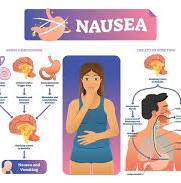The Unsettling Sensation: Understanding Nausea
Nausea is a common and unpleasant sensation that many of us have experienced at some point in our lives. It’s often described as a feeling of queasiness or discomfort in the stomach, sometimes accompanied by an urge to vomit. While nausea itself is not a condition, it is a symptom that can be triggered by various factors.
Causes of Nausea
Nausea can be caused by a wide range of factors, including:
- Illness: Infections, food poisoning, and gastrointestinal disorders can all lead to nausea.
- Motion Sickness: Traveling in cars, planes, or boats can trigger motion sickness and result in nausea.
- Pregnancy: Morning sickness is a common form of nausea experienced by many pregnant women.
- Medications: Some medications have nausea as a side effect.
- Anxiety and Stress: Emotional factors can also contribute to feelings of nausea.
Treatment and Management
The treatment for nausea depends on its underlying cause. In many cases, simple remedies such as resting, drinking clear fluids, or eating bland foods can help alleviate symptoms. For more severe cases or chronic nausea, medical intervention may be necessary.
If you experience persistent or severe nausea that interferes with your daily life, it’s essential to consult a healthcare professional for proper diagnosis and treatment options.
Coping Strategies
While dealing with nausea can be challenging, there are strategies that can help manage the discomfort:
- Breathing Techniques: Deep breathing exercises can help calm the body and reduce feelings of nausea.
- Aromatherapy: Some scents like peppermint or ginger may help alleviate nausea symptoms.
- Eating Small Meals: Consuming small, frequent meals throughout the day may prevent feelings of queasiness.

